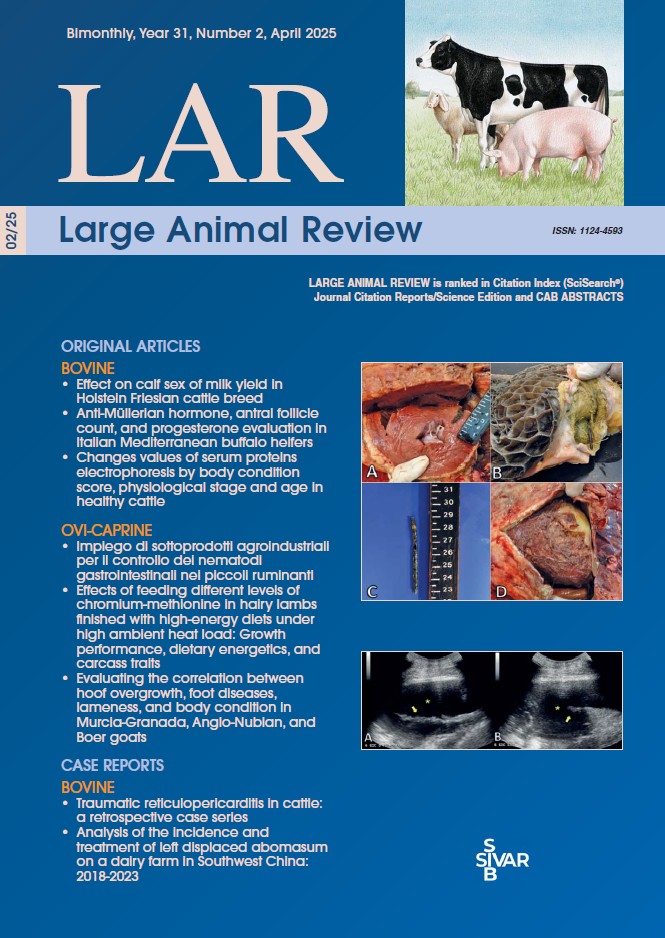Analysis of the incidence and treatment of left displaced abomasum on a dairy farm in Southwest China: 2018~2023
Abstract
This study investigates the incidence of left displaced abomasum (LDA) and risk factors (season, lactation days, parity, fetal birth weight, fetal sex, prenatal body condition score (BCS)), in a large-scale dairy farm in southwest China over three years (2018–2023), along with the effectiveness of different surgical treatments. The results showed that the average incidence of LDA was 3.77% during the six years. The average annual incidence of LDA in 2018, 2019, 2020, 2021, 2022, and 2023 was 2.76%, 3.79%,4.60%,3.13%,4.19%, and 4.14%, respectively, with high incidence during the summer and winter seasons. LDA was associated with parity (58.28% for the primiparous), lactation days (concentrated within 35 days postpartum), birth weight of calves (the incidence is higher when the weight is between 37 and 48 kg), BCS (the higher the BCS, the higher the incidence), and accompanying diseases, but not with fetal sex. Given that the left flank with ventral abomaso/omentopexy has a high success rate (91.59%) and rapid recovery of milk production. These findings offer valuable insights for optimizing dairy management's LDA prevention and control strategies.


